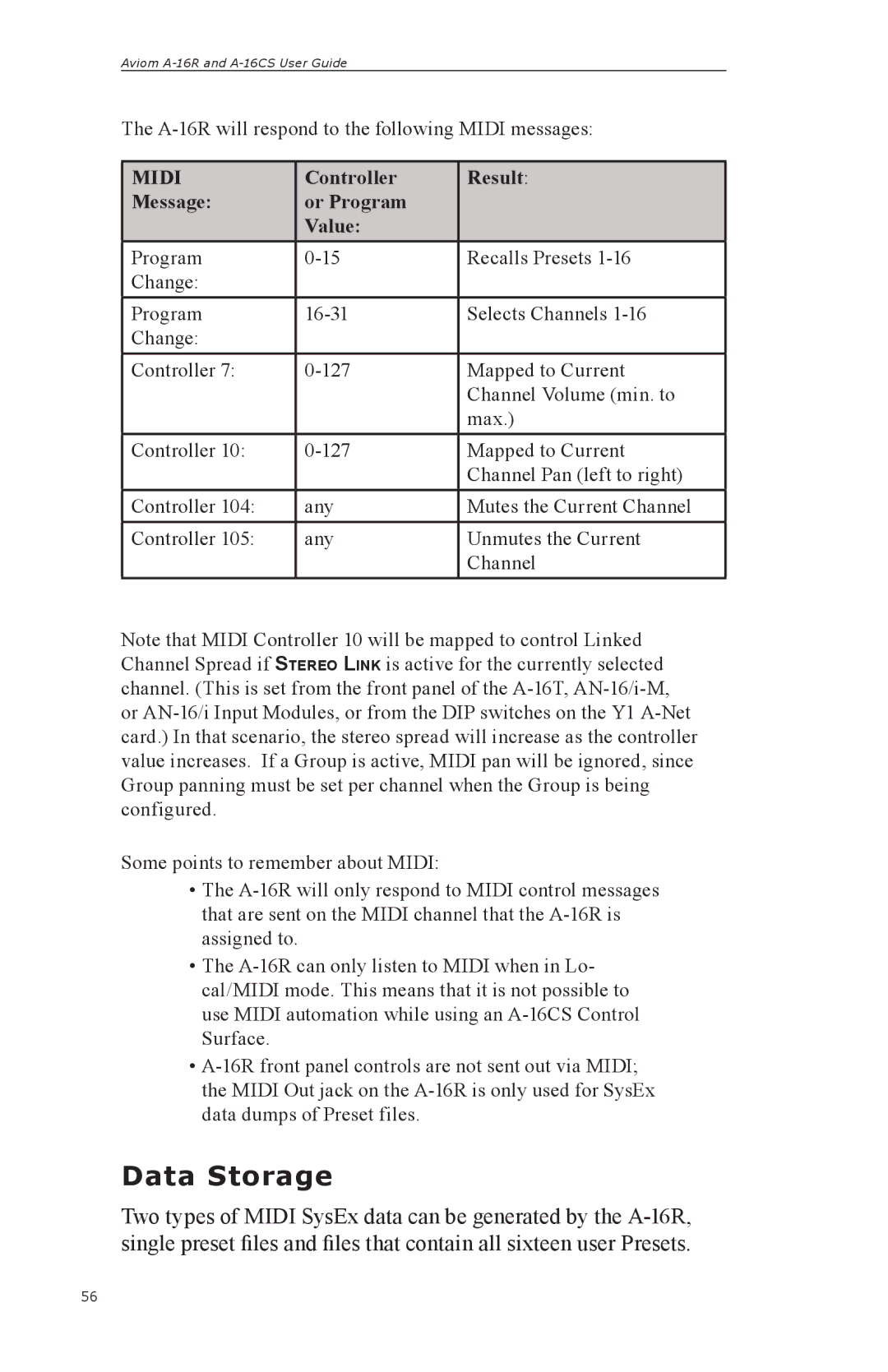
Aviom A-16R and A-16CS User Guide
The A-16R will respond to the following MIDI messages:
MIDI | Controller | Result: |
Message: | or Program | |
| Value: | |
Program | 0-15 | Recalls Presets 1-16 |
Change: | | |
Program | 16-31 | Selects Channels 1-16 |
Change: | | |
Controller 7: | 0-127 | Mapped to Current |
| | Channel Volume (min. to |
| | max.) |
Controller 10: | 0-127 | Mapped to Current |
| | Channel Pan (left to right) |
Controller 104: | any | Mutes the Current Channel |
Controller 105: | any | Unmutes the Current |
| | Channel |
Note that MIDI Controller 10 will be mapped to control Linked Channel Spread if STEREO LINK is active for the currently selected channel. (This is set from the front panel of the A-16T, AN-16/i-M, or AN-16/i Input Modules, or from the DIP switches on the Y1 A-Net card.) In that scenario, the stereo spread will increase as the controller value increases. If a Group is active, MIDI pan will be ignored, since Group panning must be set per channel when the Group is being configured.
Some points to remember about MIDI:
•The A-16R will only respond to MIDI control messages that are sent on the MIDI channel that the A-16R is assigned to.
•The A-16R can only listen to MIDI when in Lo- cal/MIDI mode. This means that it is not possible to use MIDI automation while using an A-16CS Control Surface.
•A-16R front panel controls are not sent out via MIDI; the MIDI Out jack on the A-16R is only used for SysEx data dumps of Preset files.
Data Storage
Two types of MIDI SysEx data can be generated by the A-16R, single preset files and files that contain all sixteen user Presets.

